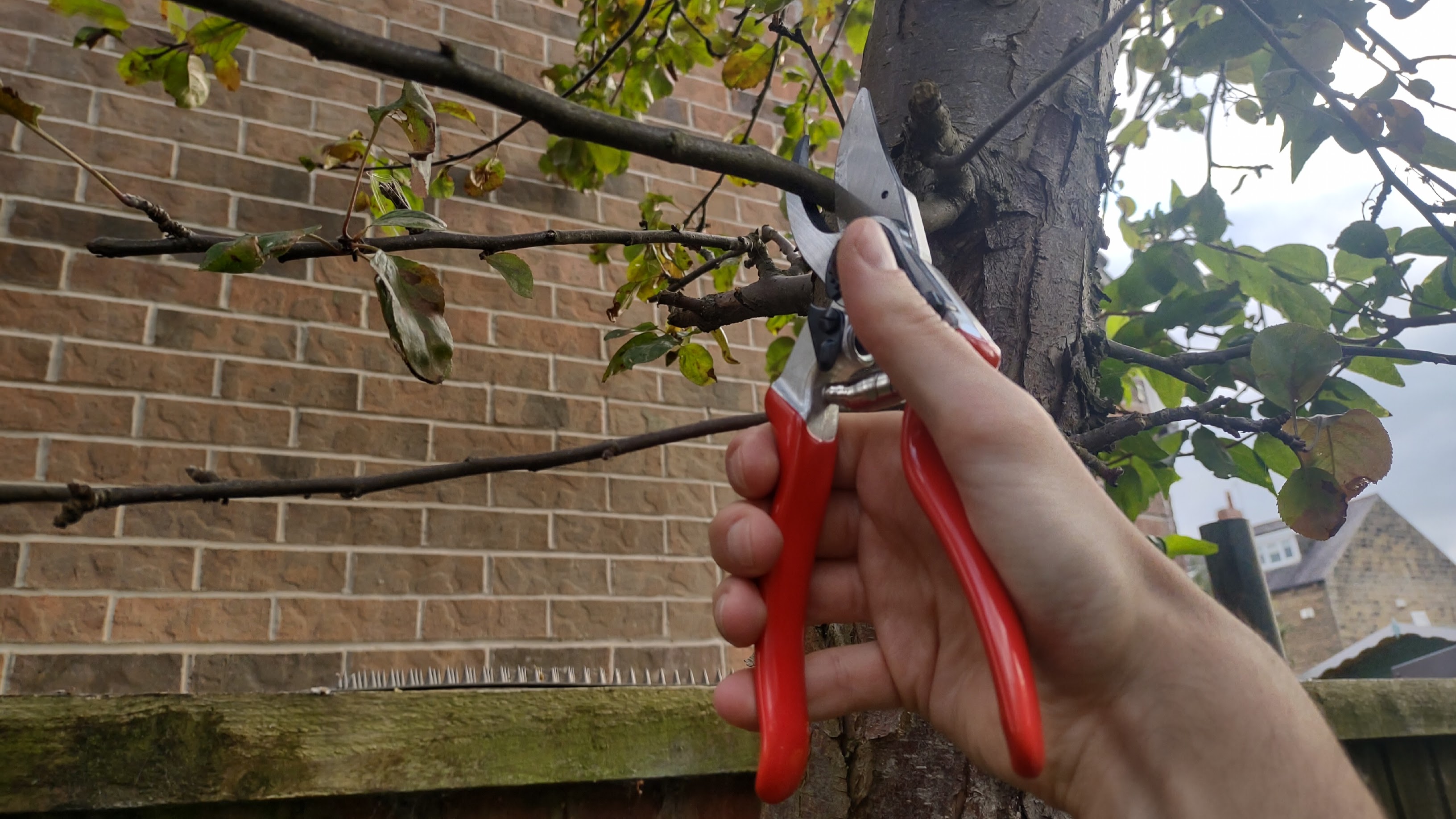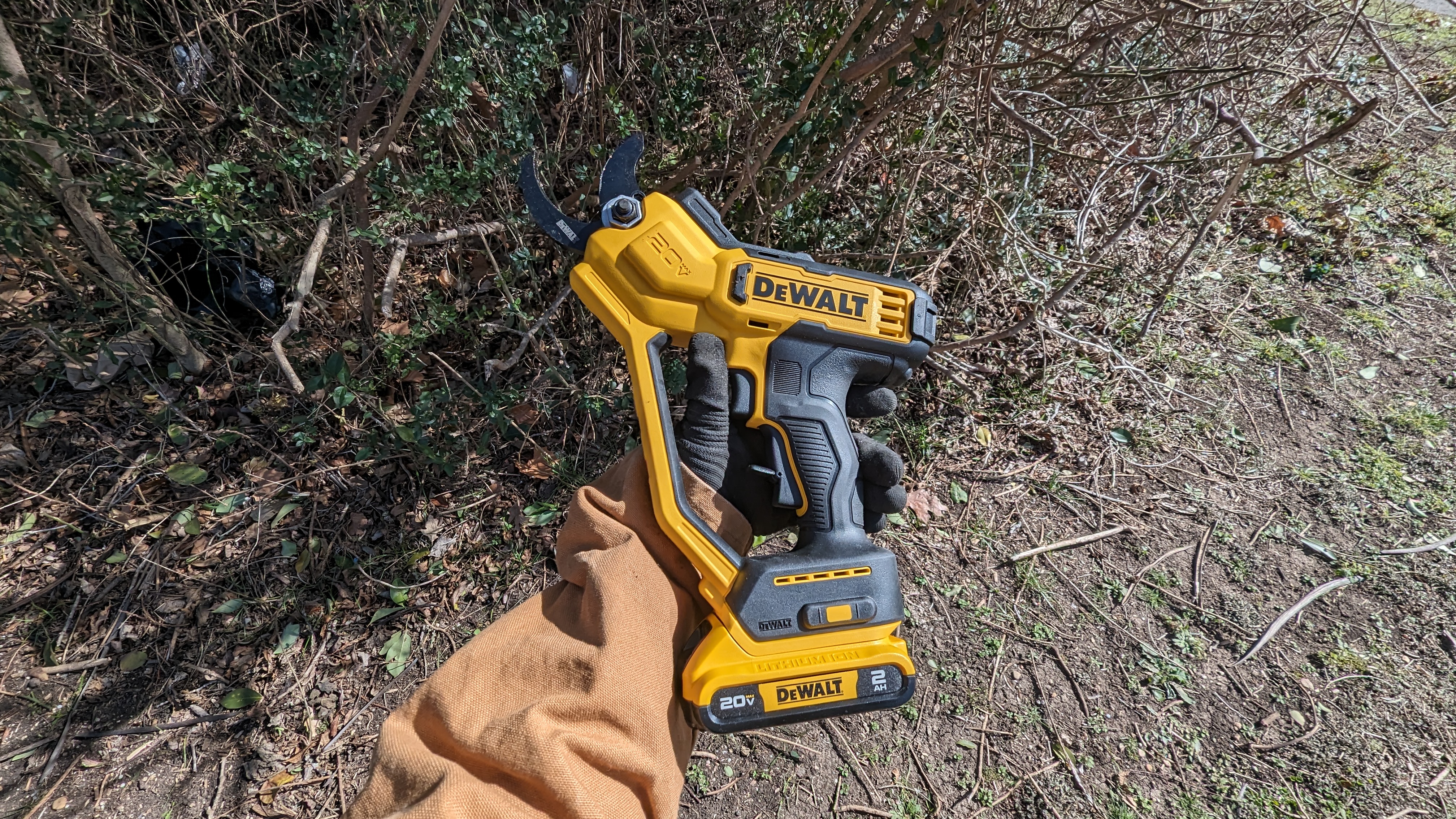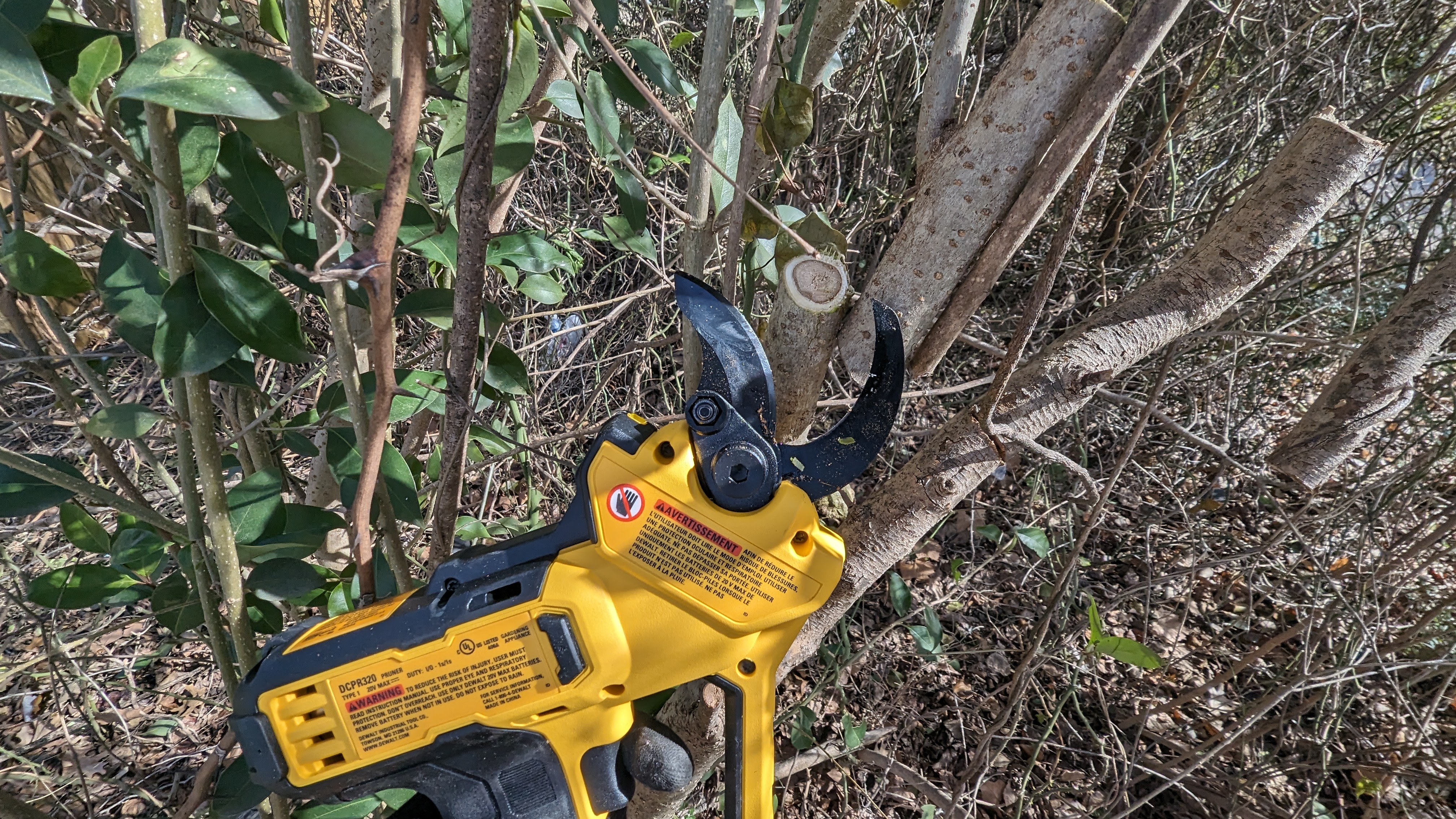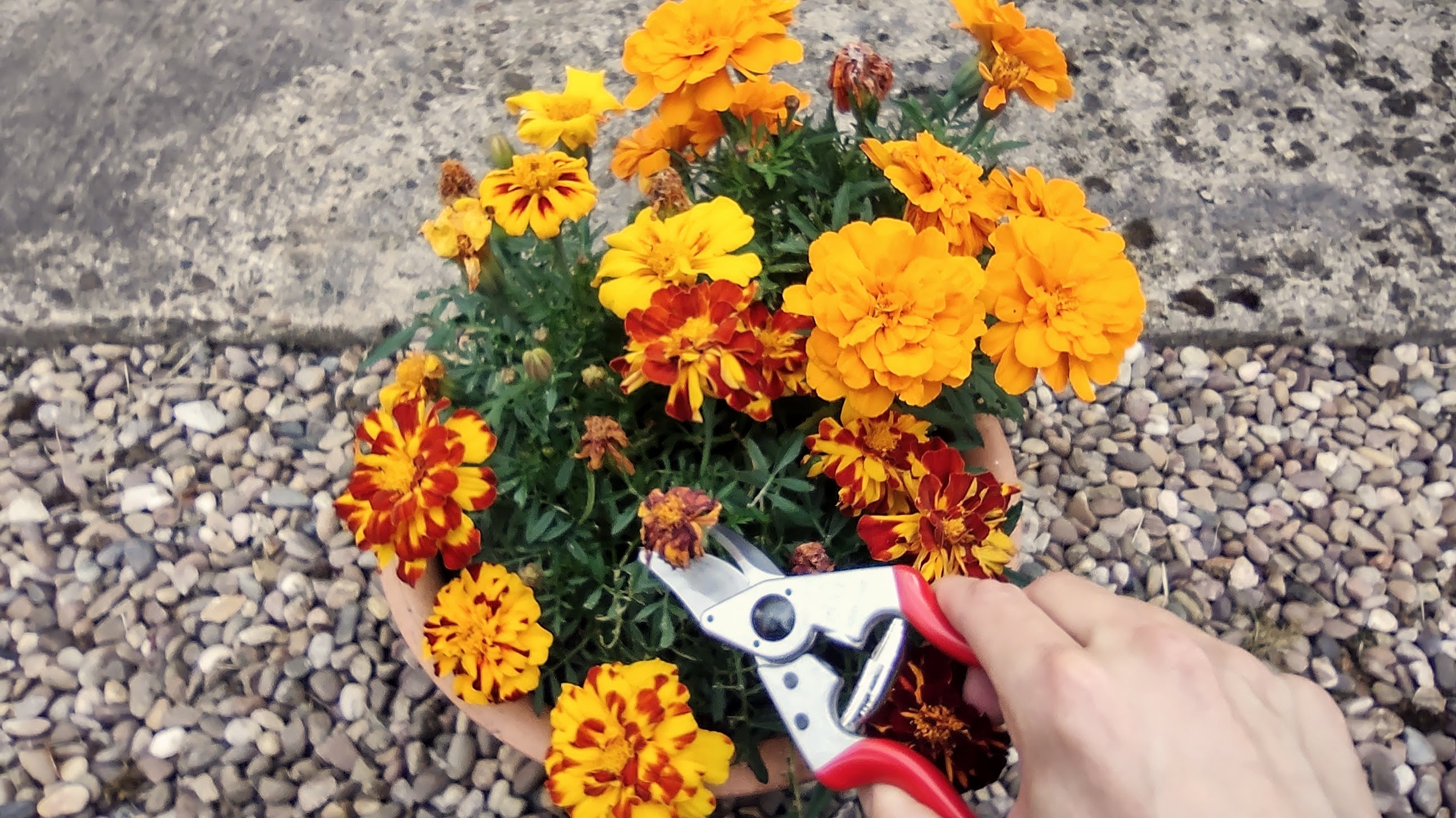
A set of pruning shearers is one of the most essential tools for a gardener to have in their arsenal. They don't take up much space to store, yet what they are capable of is vast. From pruning a tree to snipping deadheads from perennials, hand pruners are a quick way of tidying up the foliage in the yard with minimal effort.
The diversity of pruning shears is a good thing, but it means you’ll need to do some research before you go ahead and buy a pruner. In this guide, we’ll help you make the right choice by talking through the key decision factors that go into selecting a pruner – from size and pruner type to finer details such as the tool’s features and ease-of-maintenance.
With all that said, I appreciate that it can be overwhelming choosing a set of the best pruners for you. But this is where I can help. I've caught up with several experts to find out how to choose pruning shears when you next get the opportunity. They also make for awesome gifts (fyi).
How to choose pruning shears
1. Consider plant type
The first thing to consider when choosing pruning shears is the type of plant you need to prune.
"If you are pruning live, green plants then bypass shears are ideal because they provide a clean cut," Marek Bowers, sustainable garden designer and landscaping expert at Bolder Green, told Top Ten Reviews.
"If you are pruning dead or woody stems, anvil shears are better suited for tougher, thicker branches."
Morris Hankinson, Garden Expert at Hope Grove Nurseries, adds to this by explaining more about the different type of pruners you can get to suit the type of plant your pruning: "There are several types of shears to consider depending on your gardening needs, from bypass, anvil and ratchet ones.
‘Bypass pruners feature two curved blades that bypass each other like scissors that provide clean cuts with minimal damage to plants. Anvil pruners are better suited for deadwood and dry branches, using a single straight blade that cuts against a flat anvil, making them capable of handling thicker branches.
“Ratchet pruners are perfect for those with limited hand strength, requiring less force to cut through tough branches."
There are also several other types of pruning shears (or secateurs, as they are known in Europe), as well as related tools such as loppers and pruning saws.
Pruning snips are the smallest type of pruner. They have two long, sharp blades, designed to help users precisely cut thin, tender plant stems. This type of pruner is ideal for deadheading flowers, and taking cuttings for propagation. A good example is the Fiskars SP13.
Loppers are two-handed tools that work similarly to a bypass pruner or anvil pruner. Their design helps the user to generate enough leverage to cut through tough, relatively thick tree branches. We can recommend the reasonably-priced Fiskars PowerGear Anvil Lopper XS L31. A special type of lopper, called a pole lopper, uses a telescopic shaft and trigger-activated jaws to cut branches above head height.
Pruning saws are saw-type cutting tools used for pruning tree branches. They can typically be used for cutting thicker branches than a pruner or lopper could manage. Both electric and manual pruning saws are available. We were impressed with the Greenworks 24V 6" Brushless Pruning Saw, which is powered by a lithium-ion battery.
“A good rule of thumb is to keep a few pairs of pruning shears in various sizes for different tasks,” Malcolm Walker, Merchant of Watering & Hand Tools, The Home Depot, advises. He recommends bypass pruners for cleanly cutting green stems and branches, anvil pruners for cutting dead or woody branches, and pruning saws for wider cuts.
For cutting very thick tree limbs, properly trained users should consider choosing a chainsaw instead of a pruner.
2. What blade material do you prefer?
Another consideration when choosing pruning shears is the type of blade you need or prefer.
Marek says: "If you want middle-of-the-road durability and long-lasting sharpness, look for high-carbon steel or stainless steel blades. High-carbon steel blades stay sharp longer but may require more maintenance to prevent rust. Stainless steel blades are resistant to rust and easier to maintain." The Felco 6 Bypass Pruner, for example, have hardened steel blades which have a nice brushed finish.
"If you need a budget-friendly option then I recommend Teflon-coated or non-stick blades. These are affordable and help reduce friction, making cuts smoother. However, they might not be as durable as high-carbon or stainless steel blades."
"If you want premium quality, I would opt for Titanium-coated blades because they are highly durable, resistant to corrosion and stay sharp longer than standard steel blades. They are typically more expensive but offer excellent performance," says Marek.
Daniel Brooks, garden expert and the founder of BuyLawnTurf, adds: "Use shears that have reliable and string blades. Not only will this make then safer to use, but you'll save money on replacing them in the long run.
"Finding a set of sheers that have replaceable blades will make sure that you're able to upgrade them at any time, and keep them sharp."
3. Think about handle design
Next think about handle design and comfort. If you will be using the shears for extended periods then opt for cushioned grips and ergonomic handles to reduce hand fatigue, says Marek. "Look for handles that fit well in your hand and have a comfortable grip." For example, our reviewer, Pete Wise, notes that the Fiskars Plus Smartfit Bypass Pruner P541's are especially comfortable for uses with small to medium-sized hands.
Daniel agrees with Marek. He told Top Ten Reviews: "It's important to find a set of sheers that are comfortable in your hand. Most pruning tasks can become laborious so making sure they're comfortable will be something you're grateful for later on."
Morris adds: “Some pruners feature rotating handles to also minimise strain.”

4. Consider safety features
One important factor with any gardening tools is safety features.
Marek told Top Ten Reviews: "Look for shears with a reliable locking mechanism to keep the blades closed when not in use." The Wolf-Garten Anvil Pruner RSEN, for example, have a metal locking mechanism.
5. Check the sizing
The size of your hand will determine which pruners you can use comfortably. Many one-handed pruning shears are sold as ‘Small’ (‘S’), ‘Medium’ (‘M’) or ‘Large’ (‘L’). This should give you a good ballpark idea of whether the tool will fit your hand.
Marek says: "If you have smaller hands or need precision choose lightweight, smaller shears that are easy to handle. On the other hand, if you need to cut thicker branches opt for larger, sturdier shears that provide more leverage and cutting power."
However, if you’d like a more precise indication of whether a pruner is a suitable size for you, you should be able to find the tool’s dimensions on the manufacturer’s website.
6. And check the weight
Similarly, you should think about your ideal weight of pruner, before you buy one. Pruning work often takes a long time – especially if you have multiple trees or large plants. So, you need a tool that you’re happy to hold (or carry in a holster) for hours at a time.
Somewhere around half-a-pound (or 250g) is a standard weight for a pair of pruning shears. If you need something lighter, you might want to look at an affordable pruner with plastic handles, such as the Fiskars Plus Smartfit Bypass Pruner P541.

7. How much maintenance are you willing to do?
Certain models of pruning shears are much easier to take care of than others. This largely depends on whether the pruner can be taken apart – which you’ll sometimes need to do in order to clean the blades or sharpen them. When you buy a pruner that doesn’t have an accessible mechanism for adjustments, you’re pretty much accepting a short-term solution.
Meanwhile, if you’re shopping for a pruner that will last for many years, check for availability of spare parts. Even the best pruning shears are likely to break or wear out eventually, so you should buy your pruner from a brand that stocks a comprehensive range of spare parts.
Felco leads the way in terms of reparability: the Swiss brand stocks spares of almost all of its pruning shears components, and usually provides a maintenance key with its shears, to help you easily disassemble and reassemble them.
“Some pruners require regular maintenance, such as sharpening blades or lubricating moving parts, so consider choosing a pruner that aligns with your preferences or skills,” says Malcolm.
He recommends the DEWALT 20V MAX Cordless Battery Powered Pruner (Tool Only) ($89 at Home Depot) as an option that’s designed to operate over a long period of time with minimal maintenance.
Marek adds: "If you prefer low-maintenance tools then look for shears that are easy to clean and have blades that can be easily sharpened or replaced. As a general rule, stainless steel blades are generally easier to maintain."

8. Set a budget
"In my opinion Felco, Fiskars, Corona, and Bahco are the best brands known for their quality and durability," shares Morris.
"While high-quality pruners can be a bit expensive, they are usually worth the investment for how durable they are and their performance. You should consider cost with how often you'll use the pruners and for what purposes."
The majority of pruning shears that I have seen range from anything between $20-70. As well as considering what Morris says, it would be worth having a think about any future yard renovations that could effect your usage of them so that you can weigh up the cost of investment at this time.
9. Opt for a style that suits
Pruning shears come in a range of styles, from traditional models with coated metal handles, to modern, lightweight alternatives. If you care about the appearance of your new horticultural sidekick, then we’d recommend focusing on the color and form of the handles (also known as the ‘shanks’), as this part of the tool can vary greatly without affecting the cutting action.
If you’re looking for a really special one-handed pruner, then you might want to find a model that comes with a holster (sometimes referred to as a sheath). Often made from leather, a holster gives the pruner some protection from scratching and rust. Many of these accessories provide easy, on-the-go access to the pruner by looping onto your belt. If your chosen pruner does not come with a holster, you can probably still buy one that’s a good fit.
Before you use your new pruning shears, take a moment to read about the most common pruning mistakes, which can cause harm to plants, rather than producing the intended benefits.







